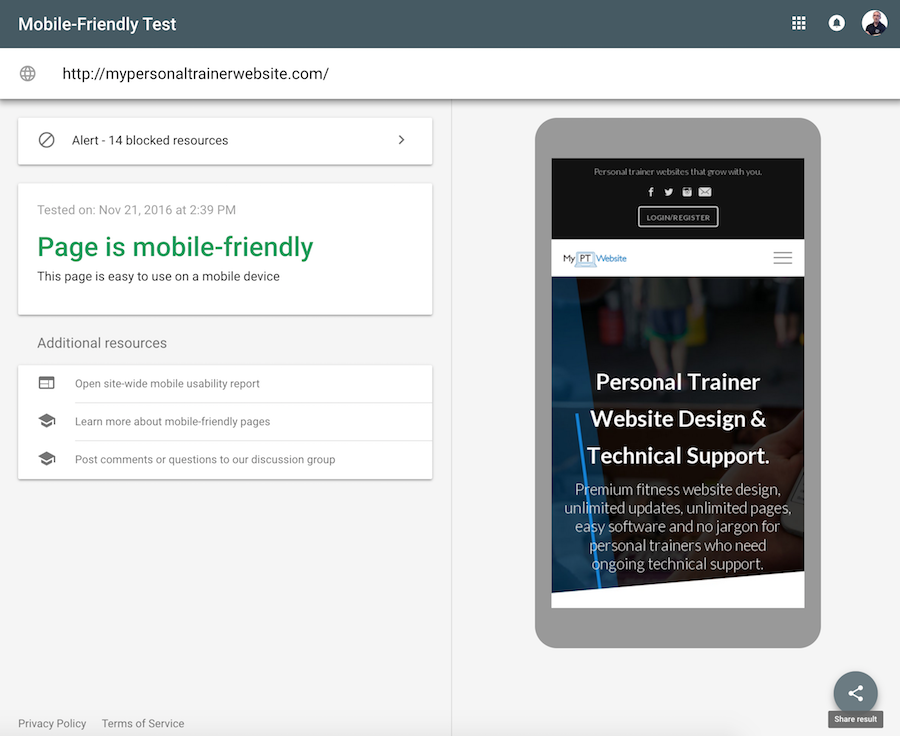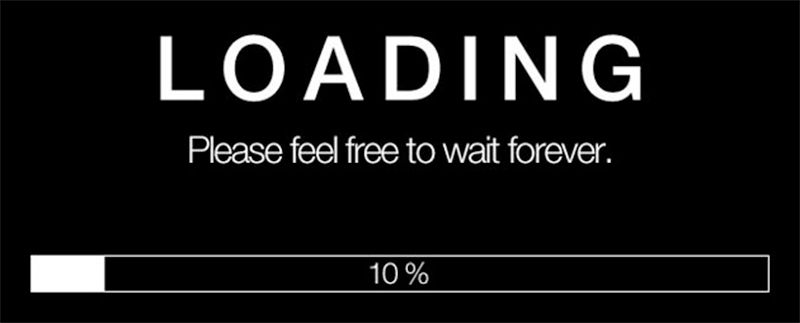I remember seeing my first one page website. It was built to showcase a Sony camera. As the user scrolled down the page, the parallax effects dismantled and assembled the camera before your eyes, explaining each component in a beautiful symphony of design and information.
As a designer, I was impressed. As a marketer, I was also impressed. I’d love to show you, but after a long search I found that Sony no longer uses the one page format.
What are One Page Websites
One page websites, or Parallax websites, are websites that are designed on a single page as opposed to being designed on multiple pages. Instead of having a Home, About, Services, Contact and Blog page, all of the content exists on one long page for visitors to scroll through.
You can see some example one page websites here.
You can see some example one page websites here.
As you can see, some of them are pretty beautiful so I asked myself; Are one page websites a viable option for your personal trainer businesses? Why isn’t Sony using a one page website anymore? Should you switch from a conventional fitness website design to a one page website? Let’s find out.
Pro's of One Page Websites
They’re Unique
One of the main advantages of a one page website and one of the main reasons personal trainers love them is because they are unique. They haven’t been adopted by many fitness professionals just yet so it can seem like a great way to distinguish yourself from the crowd. Standing out can be especially important in what is becoming one of the most competitive industries in the world!
They’re Beautiful
One page websites, like a conventional websites, can look and function terribly or be done exceptionally well. The sites that are done well are often image driven in order to keep visitors engaged while moving through the site. Check out this site by Every Last Drop. They’ve done an amazing job of telling a story and keep you engaged as you scroll to see what will happen next.
One of the main advantages of a one page website and one of the main reasons personal trainers love them is because they are unique. They haven’t been adopted by many fitness professionals just yet so it can seem like a great way to distinguish yourself from the crowd. Standing out can be especially important in what is becoming one of the most competitive industries in the world!
They’re Beautiful
One page websites, like a conventional websites, can look and function terribly or be done exceptionally well. The sites that are done well are often image driven in order to keep visitors engaged while moving through the site. Check out this site by Every Last Drop. They’ve done an amazing job of telling a story and keep you engaged as you scroll to see what will happen next.
They’re Mobile Friendly
Mobile has taken over. This year (2016) Google officially reported that more searches took place on mobile than they did on a desktop. So much so that Google even started penalising websites that weren’t mobile ready. You can check how mobile ready you are according to Google here:
https://search.google.com/search-console/mobile-friendly
One of the main issues on mobile is navigation. Most themes have adopted the Hamburger solution like us (3 lines on top of one another. See image above) and create an easy to use drop down menu when the user clicks on the Hamburger. Of course, this isn’t an issue for one page websites that don’t need navigation.
You Control the “Flow”
The flow of a website is extremely important when you’re trying to deliver a message. On a multi page website, the user can click from any single page to another with little direction and miss important information. On a one page website the user has no extra pages to distract them. They have to follow a predetermined flow.
They Tell a Story
Because one page websites lack any kind of navigation, they’re often used to tell a story instead of provide information like a multi page website. Users are encouraged to move from the beginning, to the middle, to the end, much in the same way you’d tell a story. And the best one page websites use little text and beautiful moving graphics to do so.
Con’s of a One Page Website
They’re Unique
I know, I know. That was also listed as one of the Pro’s. But unique isn’t always a good thing. In a world of unlimited information people move and make decisions very quickly, especially on the web. Having a one page website can sometimes be distracting and the user may have difficulty finding the information they’re looking for if the website doesn't use a conventional layout. This can lead to site abandonment and then you’ve lost a lead.
Load Times
Because one page websites are often very image heavy and have so much content on one page, they can take some time to load. However, you can get around this by paying for a content delivery network like CloudFlare (https://www.cloudflare.com/)
I know, I know. That was also listed as one of the Pro’s. But unique isn’t always a good thing. In a world of unlimited information people move and make decisions very quickly, especially on the web. Having a one page website can sometimes be distracting and the user may have difficulty finding the information they’re looking for if the website doesn't use a conventional layout. This can lead to site abandonment and then you’ve lost a lead.
Load Times
Because one page websites are often very image heavy and have so much content on one page, they can take some time to load. However, you can get around this by paying for a content delivery network like CloudFlare (https://www.cloudflare.com/)
Scrolling, Lot’s of Scrolling
Scrolling is one of those things that people either love or hate. Personally, I don’t mind it. Especially if I’m going to be treated to a beautiful display of digital craftsmanship. But other people can’t stand it. They’re in a rush and seeking information. If they can’t find it before their patience runs out, you might lose them.
Calls to Action
Good website design is based on predicting the visitors next logical step. What do THEY want to do next. Not, what do you want them to do. For example, when a user lands on the My Personal Trainer Website home page, our data shoes that most visitors want to see the Pricing page. That’s because people who land on the home page are new website visitors and have more than likely found us in a Google search.
So our first call to action invites them to see the Pricing page. Plus, we make a point of having the Pricing page in the navigation menu.
With a one page website, the next logical step needs to be included in the flow of the website which can be difficult for the visitor if they need to view information in an order that’s specific to them and based on their priorities.
Bad for SEO
Google needs to see two things to rank your website at the top of its list.
- Content
- Inbound Links.
Your website content helps Google to index information on your fitness website and prioritise topics based on the hierarchy of your web pages. For example, the first headline on your home page is the most important and will more than likely tell Google and the website visitor what the site is about.
If you have lots of content about a specific topic, Google thinks your site is probably going to be a good result to show in search results. Lots of pages about that topic and you’ll become a “sure thing” to Google.
Links from other websites to your website are still one of the biggest ranking factors. A link from another website to your website is “vote” from that site to say your site is awesome or relevant to something. Statistically speaking, more pages gives you more opportunities to obtain these inbound links.
Bad for Blogs
Blogging is one of the best marketing strategies available right now. A good blog posts attracts readers who are interested in your topic and encourage them to connect with you. It’s the best way to get website visitors, collect data and retarget website visitors with relevant ads.
Although it’s possible to incorporate a blog in to a one page website, it will never be anywhere near as good as having a blog page in your navigation menu.
If your blog is as important to you as ours is to us, a one page layout may not be the best option for you.
Should Personal Trainers Use a One Page Website?
My personal opinion is no. They shouldn’t. That’s because I’ve found that:
With that said, research suggests that most personal trainers need a site that:
However, one page websites shouldn’t be written off because of their disadvantages. They’re ideal if:
- Personal trainer clients search Google for a personal trainer
- Clients like to bounce around websites in different ways depending on their priorities (pricing, social proof, benefits, etc)
- Clients use pricing, testimonials and blogs to look for feasibility, social proof and competency
- Website visitors who turn in to leads often view web pages between 8 and 15 times before they get in touch with the trainer.
With that said, research suggests that most personal trainers need a site that:
- Enables the user to easily find the info they’re looking for
- Displays testimonials and social proofing
- Ranks in search engines like Google
- Has an easy to find blog page
- Utilises calls to action
However, one page websites shouldn’t be written off because of their disadvantages. They’re ideal if:
- You’re trying to tell a story (Ex. a landing page)
- You’re not bothered about being found in search engines like Google
- You need a flow to explain a particular product or service
What if I Already Have a One Page Website?
If it’s working for you, not a problem. Roll with it but just keep an eye on changes in trends or technology which may or may not favour your style of website.
If it’s not working for you, you have several option:
Whether you have a one page personal trainer website or not, just remember, websites don’t get you leads. It’s how how you use them that does.
If it’s not working for you, you have several option:
- Ask your designer or marketer for ways to improve the site visibility
- Ask your designer to create a multi page website
- Use Facebook or Google ads to get more traffic to the website
- Consider a Managed Website and have us sort it all for you
Whether you have a one page personal trainer website or not, just remember, websites don’t get you leads. It’s how how you use them that does.















